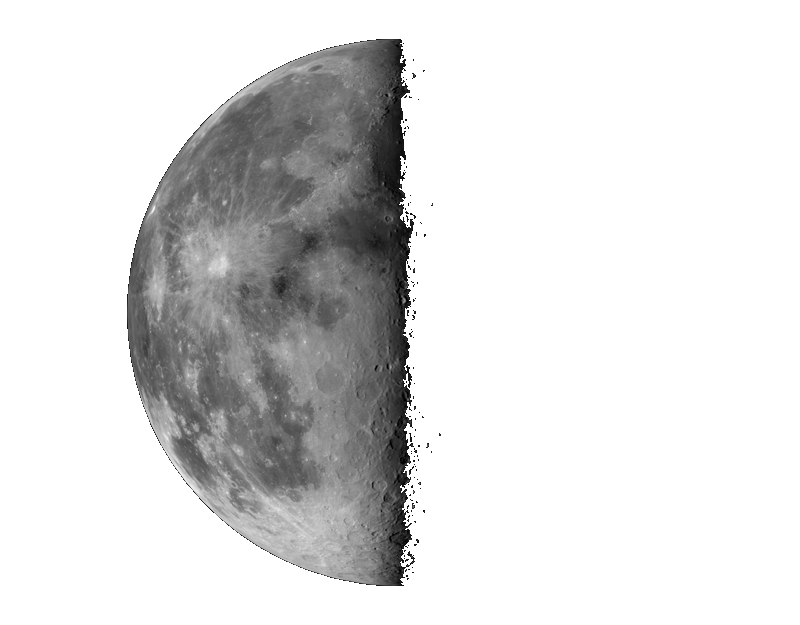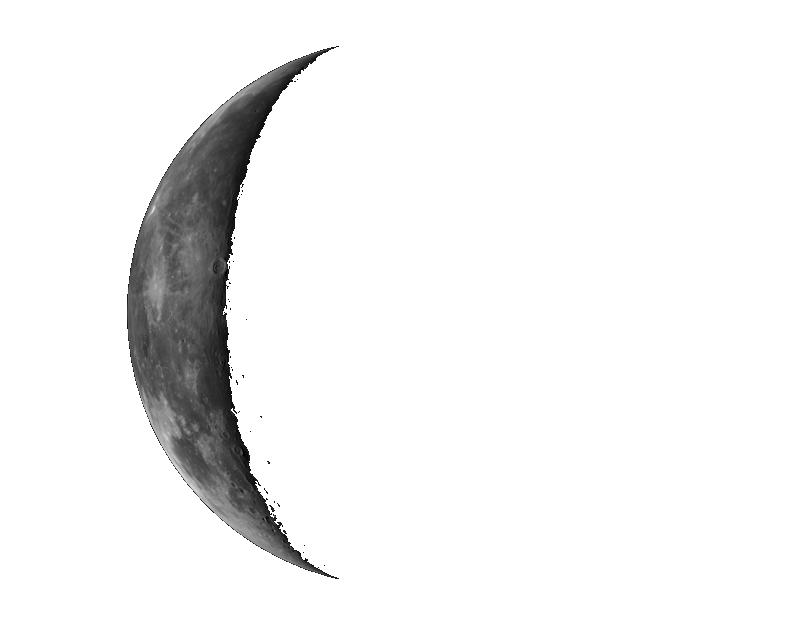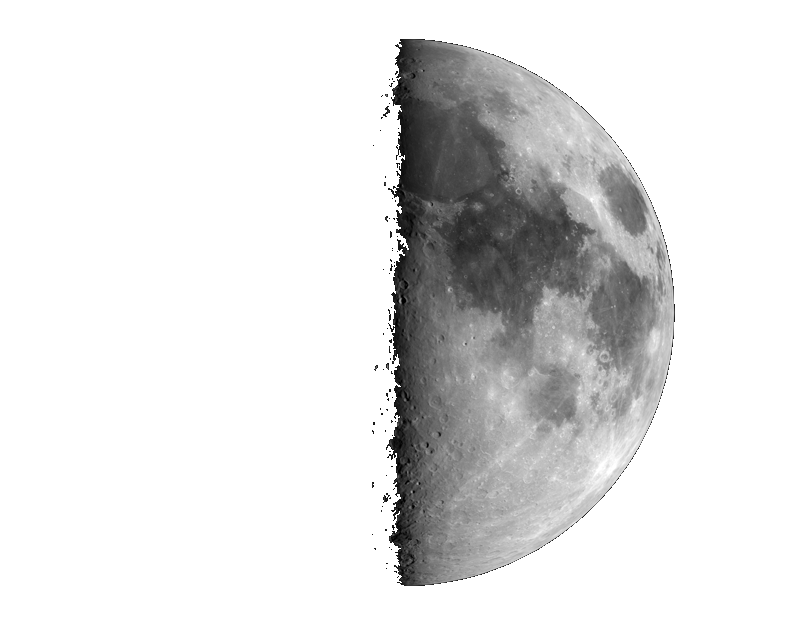Contact Us
- Address: Réservations par internet seulement
- Email: infoSPAMFILTER@spaceobs.com
- Phone: No telephone
- Cellphone: No telephone
- Website: www.spaceobs.com
Next moons
11-12-2025  | 20-12-2025  |
27-12-2025  | 03-01-2026  |
Sponsors


With Georges Attard we spend night after night watching in real time what the MAP telescopes are discovering. The number of discoveries is quite random, obviously depending on the quality of the sky (clouds), the presence of the moon, and just… luck, or not. We are only interested in near-Earth asteroids and comets, but frequently discover other objects with a more classical orbit.
The start of the year in San Pedro is never very good, and this year 2023 has not been good at all. Between 2023 BG5 discovered on January 26 and 2023DQ a "PHA" (potentially hazardous asteroid) discovered on February 23, we spent almost a month, either doing nothing because the sky was completely overcast, or with a very bright moon, either partially covered or to observe and discover nothing. It felt like crossing a desert, nothing happening, the feeling that, as the other teams continued to discover asteroid after asteroid, luck had abandoned us.
Then, on the 26th we discovered 2023 DV and 2023DW, and on the 27th, 3 new asteroids, 2023DX, 2023DN1 and 2023 DT1.
After so many empty nights, these discoveries cheered us up a bit.
When all is going well, the job of the observer is to periodically watch in the night what the control program detects and to judge whether the object is real, and/or interesting. The observations take place automatically (via the Prism software), the detection is ensured by the Tycho Tracker software which runs on PCs equipped with powerful graphics cards (GPU), and the verification is done via the control program written by Georges and which makes it possible to decide what to do based on the detections. The other work also consists of unplanting the system when one of the programs or one of the telescopes or one of the PCs is blocked (it's rare but it happens).
Here is what appeared on the screen when discovering 2023 DW
To quickly describe this image (copy of the screen of the control panel written by Georges), at the top we see that Tycho described the object as having a high probability of being real (the "high" written in green), then the local version of the digest2 program tells us that it has a 100% chance of being a near-Earth object, then the findorb program calculates a possible orbit which still indicates that the semi-major axis "a" is lower than that of the Earth (which turned out), and that the minimum intersection distance to Earth (the MOID, see below) is very low.
It was moving at 9.29" per minute (which is 3.7 degrees per day, roughly 7 times the diameter of the moon in the sky). Below are the astrometric measurements we sent to the Minor Planet Center. It was located in the constellation Sextant.
The synthetic tracking technique consists of taking several images with a short exposure time (during which the movement of the asteroid in the sky is very small), and recentering these exposures on the motion of the asteroid. Except that... when we try to discover a new asteroid, we have no information on its motion (angle and speed). The technique then consists in using a PC equipped with a GPU card (graphics processing unit) which makes it possible to multiply the speed of a computer by a factor close to 100 and to test a large quantity of motions and speeds (in our case we perform in real time 30,000 additions of 36 images posed for 30 seconds each). If there is an asteroid in the field, the addition made with the right speed and the right angle highlights it easily. This technique was "invented" independently by the team of Professor Michael Shao (from JPL / NASA) and by Daniel Parrott in the United States and we were among the first to use it intensively.
As a general rule, when the tycho-tracker software detects an asteroid, it tells us if it is known (therefore present in the mpcorb.dat file which contains 1.3 million orbits of asteroids already observed) or unknown.
There is a computer program, called digest2, which Georges has recompiled in our inspection program which gives us in real time the probability that the asteroid is an NEO.
In the case of 2023 DW the probability was 100%, so it was an NEO. In this case, after the usual checks (that it is not already on the NEOCP, that it is not an artificial satellite), if it is quite obvious, which was the case, we send directly to the NEOCP, then we send a confirmation request to our 50cm telescope. If it is faintly visible, we first send the confirmation on the 50cm telescope, and if it comes out positive (i.e. the asteroid is also visible on the 50cm image confirming that the object is real), we send the first observation, then, once published, the second.
So initially, Georges sent observations made with the RASA number 2, under the name 3BP2721, then another series obtained a little later in the night with the 50cm telescope.
Once placed on the NEOCP, it is accessible to all observers, who can decide to follow it and thus contribute to improving the orbit.3BP2721 can be translated as the first asteroid discovered on the images in binning 2, of the 7th field, taken by the second telescope, on March 26, 2023. So from left to right, 3, of 202-"3" (third year of our survey), B for the month of February (A was January, C will be March, D April, etc...) and P, the first day of the month is 1, the 9th 9, the 10th A, the 11th B , and therefore the 26th P (calculate yourself). The 2 for the number of the telescope, 7 the 7th field made in the night, 2 for binning 2, and 1 because it was the only one in this field.
The 2 RASA currently in use (there is another dome with 2 hyperstar C14 telescopes)
The 50cm confirmation telescope, whose acronym is OVTLN (Observatoire de Validation et Tracking Local des Neos)
Then possibly in the same night, if not the following nights, we continue to follow it if possible, and other observers take over. As the astrometric observations accumulate, the orbital elements converge toward a more precise value, and finally, a few days later, the Minor Planet Center publishes a circular giving the same a provisional designation for the asteroid (thus in this case 3BP2721 became 2023 DW). Subsequently, as long as the asteroid is observable, other observers, or other surveys will publish other observations, gradually improving the quality of the orbital parameters.
Often, moreover, the asteroid passing close to the Earth, its speed increases enormously, and it passes into the northern hemisphere and we can no longer follow it, or, in other cases, it passes inside the orbit terrestrial and therefore is no longer observable except in broad daylight, therefore invisible.
All the information related to 2023 DW (orbital elements and observations) can be obtained on this MPC page.
Typically, if the asteroid is at a small negative declination (we only observe in the southern part of the sky) it is tracked by many observers living in the northern hemisphere. If it is very far south, the situation is more complicated since there are far fewer well-equipped observers in the southern hemisphere. Usually observers whose telescope is located in Chile (Cerro Tololo Observatory), Namibia (Hakos), Australia and New Zealand (Mount John Observatory).
We follow our discoveries a bit from time to time, and I update our discoveries page to keep the list of our discoveries up to date, we saw that our last 6 asteroids were 5 Apollo asteroids, including two PHAs, and an asteroid of the Aten type called 2023 DW, they had been followed and we moved on.
Meanwhile, and independent of us, the data is processed by robotic programs that watch the long-term evolution of orbits and possible approaches to Earth.
This is how NASA and ESA maintain a page based on their calculations that gives the probability of impact for asteroids that could possibly collide with Earth. And we find our small rock 2023 DW on top of their list with a possible impact on February 14, 2046 (funny Valentine's Day).
Image obtained from the animation on the JPL website. On February 14, 2046 the asteroid superimposed with Earth.
There are several information to understand :
- Like any physical measurement, the position measurement of an asteroid at a given time has a certain uncertainty. In the best case, with the current instrumentation, the error is between 0.1 and 0.5 arcseconds (the arcsecond is one degree/3600). At the (rounded) distance of the moon, 400000km, 0.1'' is roughly equivalent to 200m. For information, the degree is written "°", the 60th of a degree is what is called a minute of arc and is written with an apostrophe " ' " and the second of arc, which is a 60th of minute of arc, or a 3600th of a degree is written with a quotation mark (" " "). So when we write an angle in sexagesimal (base 60) we write for example 17°25'36.5". At 10 times the lunar distance, obviously, about 2km, and in the middle of the main asteroid belt, 2 astronomical units from Earth (at the opposition), or roughly 300 million km, in the 150km range. So even in the best case we measure the position of the asteroid with an error much larger than its real diameter. If the measurement error is 0.5’’, the error is therefore 1km, 10km and 750km respectively. In the case of this asteroid, which must be around 50m in diameter, discovered at 0.07 AU (therefore 10.5 million km from Earth), our error was within 0.2'', or around 10km, so in fact the accuracy ( or rather the imprecision) of our measurement was 200 times larger than the actual size of the asteroid. To give an idea, 0.1" is the apparent angle under a 1 euro coin seen at 48km.
- When we have just discovered an asteroid, the time interval between the first and the last observation is very short (observed arc) and we manage to make pass almost anything like orbit on these few points. We could therefore immediately say that it was going to crash off of the coast of Chile in 6 months and 14 days (just to make fun of the poor "Don't look up" movie). In reality at first we have absolutely no idea at all. Once at least three position measurements have been made, orbital elements can be calculated. By varying the given positions within the probable error, one can, with a method somewhat similar to Monte Carlo methods, calculate various orbits giving on the one hand different orbital elements, and on the other hand a cloud position where it should be possible to find the asteroid at a given time in the following nights. The MPC site calculates 2000 probable orbits based on the observations that are available. As time goes on, other observations are made by various observatories around the world and the orbital elements converge to the actual current value of the orbit. It's quite easy to check this on the NEOCP, choose an asteroid with a very small arc, select it, ask for its ephemeris, then click on "orbits" and you will see that the MPC program calculates 2000 possible orbits with huge variations on the orbital elements. By choosing an asteroid with a larger arc we see that the orbital parameters are more and more stable as the arc lengthens.
- This asteroid, later, will pass close to a planet (this is the main property of these asteroids which no longer rotate between Mars and Jupiter), and will be deviated from its current orbit. 2023 DW may approach the orbit of Mercury and cross that of Venus. We can imagine a kind of “cloud” linked to the uncertainty of the position, in which the real asteroid is located. As a general rule, this “cloud” has the shape of a fairly large ellipse which can quickly reach several millions of km. If it is "in front" of this cloud, it will be deflected at a certain angle by the gravitational force of the planet, if it is "in the back" of this cloud, it passes close to the planet a little later, and it will be deviated by a different value, since in the meantime the planet will have moved and the distance will no longer be the same. For information, the Earth in its orbit moves on average its diameter every 8 minutes. And so the passage of the asteroid near a planet "explodes" the size of this cloud of uncertainty. If one tries to interpolate the position of the asteroid in the future, after several such encounters, the uncertainty about the actual position of the asteroid becomes really very large (mathematically it's called a chaotic orbit, meaning that a very small error on the initial conditions creates very large changes in the final one. During a passage near the Earth, this zone of uncertainty can be so large that it can contain the Earth at the time of the greatest approach, and in this case we cannot exclude a possible collision with the Earth. So these asteroids are placed on these "risk pages", knowing that a priori, once their orbit has improved a little, the probability of impact, originally homeopathic, will go down to 0, or in other words, it is more than probable that all of the asteroids contained on "risk pages" will only pass by the Earth on the said day.
-Conversely, after a passage close to a planet, during a following opposition, on the one hand we obtain new observations, and above all we greatly improve the knowledge of the orbit of the asteroid, which drastically reduces the size of this "ellipse of uncertainty". From there two solutions: either the Earth is no longer in this ellipse and the probability of an impact goes down to 0, or the Earth is still there and the probability of impact increases in the inverse proportion. Which allows you to be scared. If it is observed via a radio telescope (we should rather say a radar-telescope), the precision is enormously improved. But since the collapse of the Arecibo radio telescope, the means in the field are much more limited.
- So a very classic case is that the probability of an impact goes from very very low, to very low, then low, then back to zero and that is certainly what will happen with 2023 DW.
All of that being said, we were surprised to find our 2023 DW at the top of the impact hazard lists. It measures in the range of 25 to 80m in diameter, so even in the event of an impact, it would only cause local damage, a bit like the asteroid which exploded above Tunguska on June 30, 1908. In the most likely current orbit, the MOID (Minimum Orbital Intersection Distance) is 0.0005 AU, or 75,000 km, which is less than the Earth-Moon distance (384,000 km on average) or twice as high as geostationary satellites.
But that's only considering only the nominal orbit, other orbits bring it both much farther or much closer (too close). In order to have an impact, the asteroid and the Earth must be in the same place at the same time. The probability is very very low anyway.
Because of this "non-zero probability of an impact", it has been monitored by several observatories but will become increasingly difficult to observe (at the end of March it will already be beyond magnitude 23) .
Looking at NASA's page on this asteroid and looking at the orbit view and rotating the animation, we see that it will be observable again around February-April 2026, then March-May 2029, then April May 2032, then Valentine's Day (February 14) 2046, but perhaps a little too close. Then follow several possibilities of impact on other dates.
If it is well followed in the nights that follow (this text is written on March 7, 2023), it should be found in 2026, and it is more than likely that the risk of impact will go down to zero. Or not. We will have had our 15 minutes of fame (according to Andy Warhol).The impact table calculated (as of March 6) by NASA's JPL group:
4 megatons of TNT is the equivalent of the big thermonuclear bombs in the arsenal of the Russian and American Strangelove doctors. Maybe by then, only 4 Megatons won't even make the news anymore... :)For the moment, if you search on google for "2023 DW", you mainly come across the programs of the German TV channel (Deutsche Welle). If we search for "2023 DW asteroid" we find some well-informed articles, hope the information will not be picked up by some crazy tabloid talking about the end of the dinosaurs on Valentine's Day 2046. On the one hand, we see on the page of the ESA that the cumulative impact probability is 1/609, so there is a 99.84% probability that there will be no impact. As explained above, it is also more than likely that the probability of impact will quickly drop to 0.
Note on the so called "Torino scale"
To end this page, a short note on the Torino scale. It was chosen by the majority of a group of astronomers who thought it was useful to communicate "simply" (in other words, so that a journalist and his reader understand) the notion of probability of impact . It looks like this :
It is therefore a scale that links both the diameter of the asteroid, the energy it would produce in the event of an impact (in megatons of TNT) with the probability of impact.
At this meeting (which obviously took place in Torino, Italy) in 1999, there were a few of us who disagreed with this approach (including Brian Marsden who was the director of the Minor Planet Center at the time).
First problem: The public does not necessarily understand that a probability of impact can evolve over time, in other words, we could very well discover a large asteroid which makes a close approach to the Earth, for example a 5km asteroid (at the top of the scale), which in 50 years will pass very close to the Earth. Initially the probability of impact is 10-6 (so it would be in Torino scale of 1), then more observations accumulate, the probability of impact increases, it goes to 10-4, it is now in the yellow part of the diagram, then a few years before the impact, the probability increases again, it arrives in the red part, it is Torino scale = 10, it is the end of the world assured, and... it goes to 1000km from the earth's surface, and the probability goes down to 0 which would be completely to the left of the diagram. We cried wolf for nothing, and very likely the consequences of this false alarm would be detrimental. And "the astronomers" pass for big fools, which in this case would not be entirely false for some of them, except that the specialists of the NEOs would make the whole corporation wear the dunce cap.
Second problem: As it is highly improbable, in the short term, to die following the impact of an asteroid, this diagram will never be used in real life (provided one waits to have a good quality orbit). In the vast majority of cases, we will be in the presence of a future close approach to Earth, and the presence at the start of an asteroid on this diagram is only the consequence of our ignorance of the real orbit of the asteroid. In other words, if it were possible to obtain immediately, from the first observation, orbital elements of infinite quality, it is more than probable (in the sense of 99.999999999...... %) that this scale is useless , except to generate false fears. There was quite a debate on this subject at the time. As a general rule in science, results are only published if they are based on good quality data. And this should be even more so when the outcome in question is a major natural disaster. However, NASA's policy, imposed by the existence in society of conspiratorial cretins, is to publish everything openly, as soon as the data is acquired. Everyone knows it, NASA is a group of comedians who had fun simulating lunar missions, we are being lied to, the earth is flat, etc... :) However, an asteroid which has just been detected (like our 2023 DW) has, by definition, necessarily very approximate calculated orbital elements. In our case, there is ansolutely no hurry, and even if it were to impact, it would not be a major disaster. In the vast majority of cases, near-Earth asteroids that have a non-zero impact probability (the ones listed on the ESA and NASA "risk" pages) won't stay there, because they will not impact the Earth. The vast majority can be removed from the list if not at the first opposition, then at the second. If 2023 DW does not come out of the list before June 2023, it will most likely come out during the opposition of 2026. It is not proven but it is statistically more than likely. We must obviously continue to observe it, but it may not be necessary to stir up the public about a danger that does not exist. The public in question, if it needs stress, has only to read the daily press without needing to add to it with the end of the dinosaurs :).
Personally I was in favor of the data being released to the public only once a quality orbit was achieved, but NASA policy (and NASA is running the show) is that everything is released as soon as origin which in my humble opinion is a mistake. It would have been quite feasible to put a flag on this or that asteroid, telling the astronomers who follow these asteroids that this one requires careful monitoring, until the probability of impact goes down to 0, and only publish when the probability of impact itself has a probability of being correct. Either way, it's a lose-lose game. You don't publish, you are accused of hiding things, you publish, then what you publish is no longer true some time later when the orbit is of good quality, and you are called a joker. The problem is that there is a fringe of society who lives in parallel worlds, who should normally be interned, and whose mental misery makes them believe in the end of the world, in gods who are there to punish the humanity, etc... One of the biggest stupidities (and yet there are some) in the movie "don't look up" is the arrival of the military, the FBI, etc... to hide the information. Today the Near-Earth Cruiser confirmation page (NEOCP, see above) is accessible to everyone, and astronomers from all (rich) countries contribute to the inventory of these asteroids.
Third problem: The diagram does not take into account the time interval between the first detection and the date of the impact. A 100m diameter asteroid falling on Earth next week is much more "dangerous" than a 1km diameter asteroid falling on Earth in 50 years, because in the first case there is not much you can do. In most countries, there are no resources to evacuate an area of 300km in one week. If the asteroid hits Earth in 50 years, we have plenty of time to prepare space missions to deflect it and it poses no danger. If for example an asteroid, never detected before, coming from the interior of the solar system (relative to the Earth) falls on Earth without having been detected, the time interval between detection and impact is 6 seconds ( when it starts to shine very high in the sky) and the witnesses of this observation have very little time left to live :) Any probability of an impact taking place decades in the future has every chance of not happening because we will do something about it.
Just look at the past millennia and see that there have been no asteroid impacts, because those are very, very unlikely events. For the same amount of money spent on the NASA DART mission, which collided with a small asteroid, it would have been feasible to build several telescopes 3-4m in diameter which would have made it possible to advance significantly more in the inventory than we are in the process of carrying out, and inventory which, more than very probably, will show that there are no dangerous asteroids threatening the Earth in the coming century... in short, we must know how to keep our senses.
Email sent to the director of NASA's Planetary Defence Coordination Office on March 11th, 2023
A few days after the text was written, it became apparent that the communication of NASA "forgot" to mention any details about discovery or follow up observations, and we saw many papers saying that "NASA had discovered an asteroid which had a small probability of impacting us, bla bla bla..." This really annoyed me (to say it politely). So I wrote to the person whom I believe generated the press release.
Hello,
My name is Alain Maury, and I am one of the members of the team which discovered asteroid 2023 DW.
Just to mention that in your communication about this asteroid, it would have been nice, and fair, to mention the fact that we discovered it and not that “it was discovered”.
All the press articles I have seen so far do not mention any discoverer, nor does it mention that a good proportion of the people who provided astrometry (which your group and the ESA group used to computer impact probabilities) are amateurs from all over the world (France, England, Italy, Spain, New Zealand, Brazil). Not mentioning any of this let the readers believe that NASA did all the job which is factually not true.
I don’t know if the fact that we are amateurs (which is related to “amateurish”) is a problem for you.
We discovered this asteroid, provided the first follow up, then more follow up came, then the MPC circular came, and for us the job was done. As you know/realize the probability that any recently discovered NEO could be a potential impactor is extremely small, we don’t even worry about trying to calculate where the object is going to be in the future. We saw that the MOID was very small, but larger than Earth diameter.
Then you and ESA (I don’t know if you coordinated the announcement) made this public, and we could not do anything about it, and there we are, completely ignored, most press articles we have seen do not mention us, and while we were able to connect to a few journalist to signal that the asteroid just didn’t appear in front of your computer alone, the vast majority just copy your press release, some twitter interviews and doesn’t reflect the reality (the discovery and the follow up).
While you understand publicity is very important when it comes to financing, that’s why you have a communication department, you can understand that it is even more important for groups like us. So this email is not about me whining about being spoiled by NASA of our important discovery, it’s also a matter related to the future of our operation. We need to have more telescope working. I did finance most of the operation, putting so far about 100k$ of my own money in the project (2 domes, 2 mounts, 6 telescopes, computers, cameras, GPU PCs, solar energy electrical installation, etc…). The other members contributed about 3K$. We did get sponsoring from the Starizona company (equivalent to 3K$) and from a NEO Shoemaker grant from the Planetary Society (8k$). We are trying to convince some european businesses to finance another 4 telescopes, and that publicity would have been really useful. We don’t expect ESA to move their little finger, even though we are by far the most successful European NEO search program ever (since we started January 2021, we have discovered close to 140 NEOs and 5 comets, and are the 4th largest such program after of course Catalina, Panstarrs and Atlas).
Hardware is not all. The program works because I live in a first class astronomical site (320+ clear nights/year). Then behind our success is a huge and original software development (done during the pandemic).While our team of 5 persons could be classified as amateurs, we are not. Daniel Parrott is American and the other 4 members are French.
I’m lucky enough to work with these guys which are brighter than most of the computer engineers and scientists I met when I was working in professional research.
Next time around, if any, please do mention the discoverers, and in our case, if you don’t want to coin the term “amateur”, you can say that MAP (our program : Maury-Attard-Parrott) is an “independent program”.
Cordially,Alain
11-12-2025  | 20-12-2025  |
27-12-2025  | 03-01-2026  |

